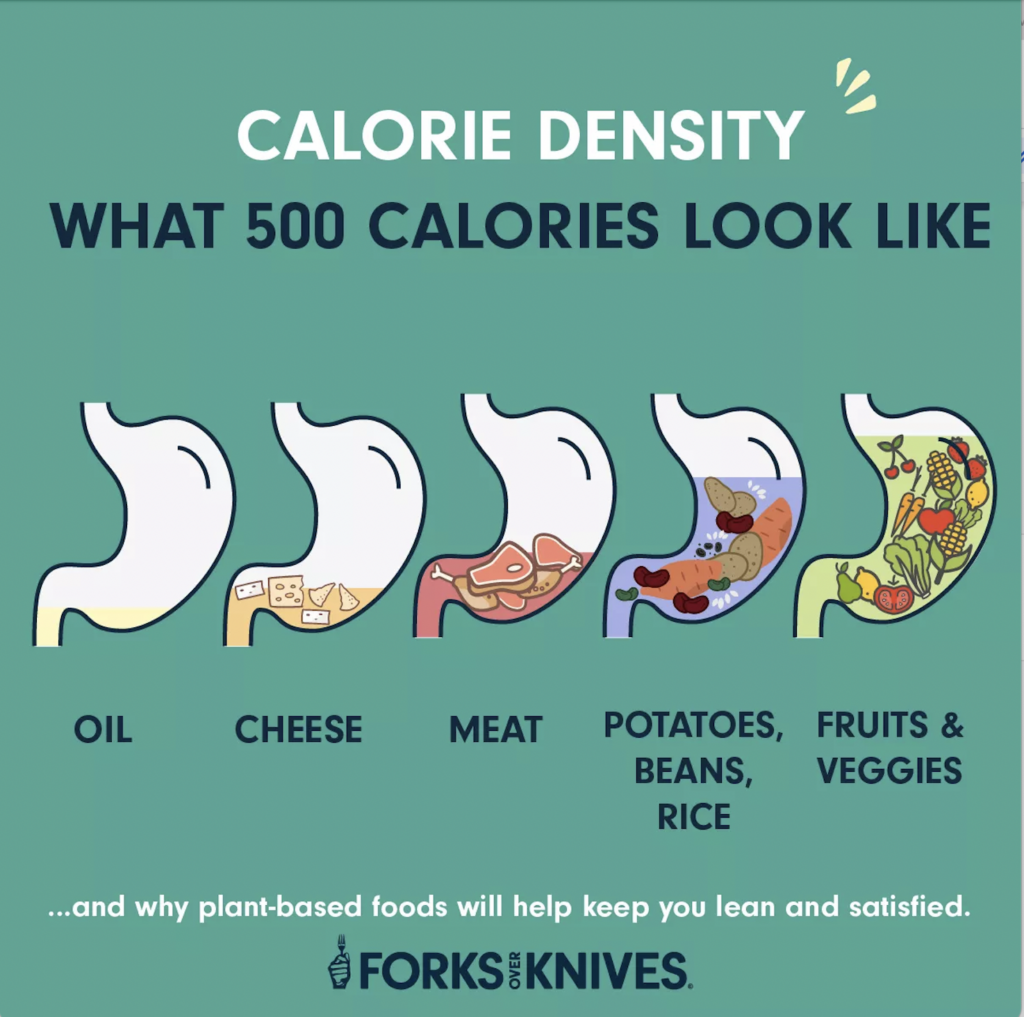It is often difficult to keep our weight in check during the holiday season. Between holiday office snacks, holiday parties, and feasting on the actual holidays, there are many opportunities to let your sweet tooth rule your dietary choices this time of year.
To attain your weight loss goals, you may be tempted to counteract overindulging in sugary treats with a promise to yourself that you will abide by the weight loss mentality of “eat less, portion control” at the next meal. But what if there was another, more sustainable, weight loss mentality? There is!
If you focus on packing a majority of your meals with foods that have a low calorie density, you will be full and satisfied on fewer calories and be able to achieve your weight loss goals. Your diet will also be more nutritious.1
Low calorie density foods
Foods that are low in calories, but high in volume
The calorie density of a specific food can be measured by the amount of calories in one pound of the specific food. A food that is low in calorie density will have a small amount of calories in a large amount of food, while a food that is high in calorie density will have a large amount of calories in the same amount of food.2
Forks Over Knives, an organization that advocates for preventing several chronic diseases through consuming a low-fat, whole-food, vegan diet, states that:
- People can freely eat foods that are 300 calories per pound or less without gaining weight.
- People can consume significant portions of foods between 300-800 calories per pound while loosing or maintaining their weight.
- The intake of foods with 800-1,800 calories per pound can contribute to weight gain and interfere with weight loss efforts.
- The intake of foods that have over 1,800 calories per pound can easily contribute to weight gain and obesity and can also greatly interfere with efforts to lose weight.3
When you incorporate low calorie density foods into your diet, you can enjoy eating large volumes of food without having to worry about the amount of calories consumed. This infographic below from Forks Over Knives gives a great visual to this concept.

The information in the Calorie Density Scale below shows the average amount of calories per pound in different types of food.
Calorie Density Scale
| Food | Average calories per pound | How much can you eat? |
| Vegetables | 100 | Eat freely |
| Fruits | 300 | Eat freely |
| Whole Grains | 500 | Relatively large portions |
| Legumes | 600 | Relatively large portions |
| Pasta | 600 | Relatively large portions |
| Avocado | 700 | Relatively large portions |
| Animal protein | 1,000 | Limited portions |
| Bread | 1,200 | Limited portions |
| Ice cream | 1,200 | Limited portions |
| Cheese | 1,700 | Limited portions |
| Junk food | 2,300 | Extremely limited portions |
| Chocolate | 2,400 | Extremely limited portions |
| Nut, seeds, nut butters | 2,800 | Extremely limited portions |
| Butter | 3,200 | Extremely limited portions |
| Oil | 4,000 | Extremely limited portions |
Where do I begin?
If you choose to focus on incorporating lower calorie dense foods into your diet, start by adding in lots of greens and non-starchy vegetables. Studies show that the number one predictor of how satisfying people will find a food is not the fat content of the food, but the water content. The foods with the highest water content are whole plant based foods.6
Preloading with high water foods, such as fresh fruits, veggies, soup, or salad before a meal results in consuming less calories because you become satisfied earlier in the meal. The same effect can be achieved by preloading a meal with two cups of water.7
In addition to incorporating foods that have a high water content, a good rule of thumb is to pack half of your plate with whole grains, legumes and starchy vegetables and the other half with vegetables and/or fruit. This strategy will result in feeling full and satisfied, while not over consuming calories. It will also result in eating as much health-promoting, nutrient dense foods as possible.
There are no restrictions with eating a whole foods, low calorie density, plant-predominant diet. You can eat without worrying about portion control and still maintain a healthy weight. The key to this sustainable weight loss strategy is changing the caloric density of foods that you eat, not the volume of food that you eat. You will not feel hungry or deprived. You will also be packing your diet with the most nutrient dense foods available, which will positively impact other areas of your health in addition to your weight.
Need help getting started?
Interested in learning more about transitioning to a whole foods, low calorie density, plant-predominant diet? Folsom Physical Therapy is launching our Nutrition Education program in early 2022. More information about our new program will be sent out to our mailing list early in the new year.
References
- https://nutritionfacts.org/video/evidence-based-weight-loss-live-presentation/
- https://www.forksoverknives.com/wellness/the-calorie-density-approach-to-nutrition-and-lifelong-weight-management/
- Forks Over Knives – The Calorie Density Approach to Nutrition and Lifelong Weight Management, June 19, 2012 – Jeff Novick, M.S., R.D.
- https://www.forksoverknives.com/wellness/the-calorie-density-approach-to-nutrition-and-lifelong-weight-management/
- https://plantstrong.com/calorie-density-for-weight-loss/
- https://nutritionfacts.org/video/evidence-based-weight-loss-live-presentation/
- https://nutritionfacts.org/video/evidence-based-weight-loss-live-presentation/










